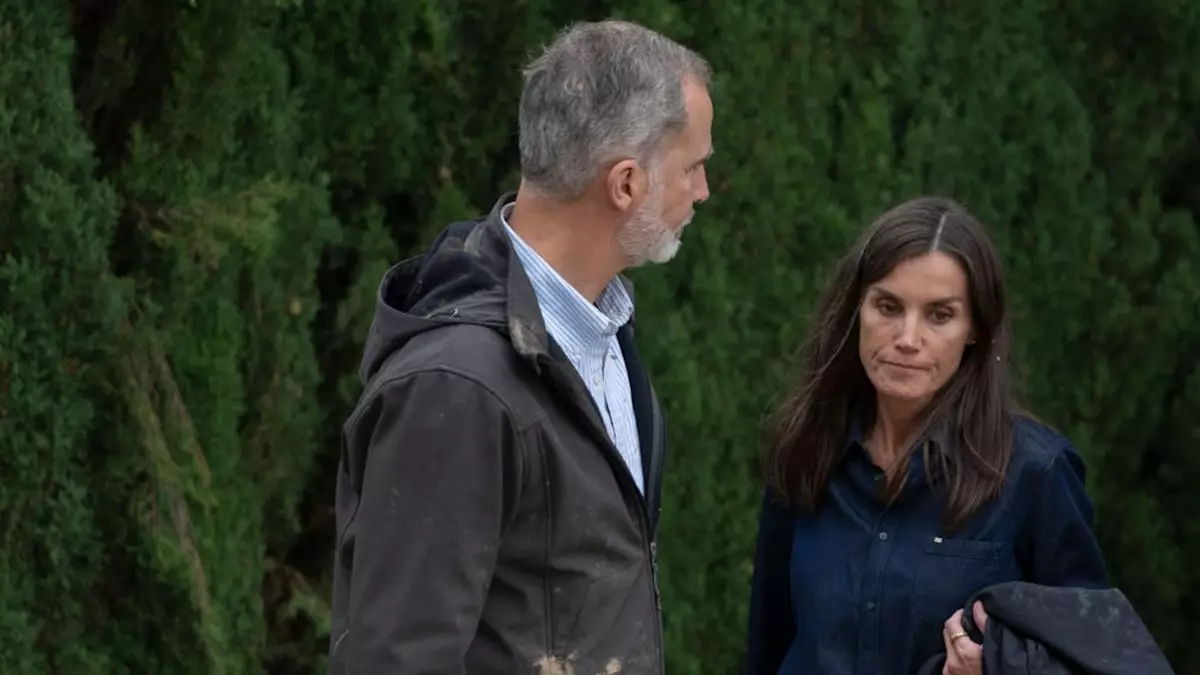In recent days, Spain, specifically the region of Valencia, has faced a tragic calamity as devastating floods resulted in the loss of over 200 lives. This catastrophic event has not only wreaked havoc on the homes and lives of countless individuals but has also incited emotions of anger and frustration among the residents affected by the disaster. In an effort to provide support and solidarity, King Felipe and Queen Letizia of Spain took the significant step of personally visiting the impacted areas. However, their visit highlighted not only the royal commitment to their country but also the palpable resentment directed towards the political leadership.
When the Spanish monarchs arrived in the flood-ravaged regions, they were greeted by mixed emotions. While locals perceived the royal visit as a beacon of support amidst their suffering, it quickly turned chaotic. The presence of Prime Minister Pedro Sanchez, accompanying the royal couple, exacerbated the situation when crowds expressed their frustration through hostile actions, throwing mud at him. Importantly, the anger seemed to stem from an underlying sentiment regarding the perceived inadequacy of governmental support in the wake of the disaster. This illustrates a larger issue of public trust in leadership during times of crisis.
Amidst the turbulent atmosphere, Queen Letizia’s interactions with the grieving residents stood in stark contrast to the anger directed at the politicians. Heart-touching moments captured in media showed her comforting a distressed local woman and visibly struggling to contain her emotions while listening to the stories of those affected. Her compassionate approach not only reinforced the role of the monarchy as empathetic figures within society but also underscored the human toll of political inaction during times of need.
In addition to their physical presence, the Spanish royal family took to social media to express gratitude for the outpouring of support received both domestically and internationally. Messages conveyed their heartfelt acknowledgment of the emergency services and organizations tirelessly aiding in recovery efforts. These communications were accompanied by poignant photographs showcasing the emotional toll the floods have taken on both the victims and the royals themselves, attempting to bridge the gap between the monarchy and the public through visually impactful narratives.
While the visit to Valencia showcased the royal dedication to addressing the suffering inflicted by natural disasters, opinions on their actions were polarized. Supporters lauded the monarchy for their presence during such a dark time, contrasting the royals’ engagement with the perceived apathy of political figures. This sentiment underscores a growing call for greater accountability from elected officials, while simultaneously reinforcing the monarchy’s symbolic role in providing solace and empathy to a nation in mourning.
The royal family’s actions serve as a reminder of the vital role that empathy and support play in healing communal wounds after tragedies. The challenging interplay between public emotions, governmental accountability, and royal responsibilities paints a complex picture of how societies navigate crises.

